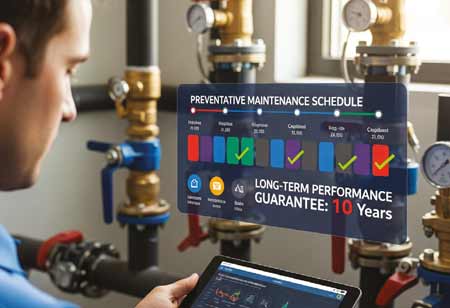Thank you for Subscribing to Construction Business Review Weekly Brief
Specials
- Apartment and Condominium Contractors Canada
- Decking Canada
- Architectural Glass Europe
- MEP APAC
- Construction Saudi Arabia
- German Apartment and Condominium Contractors
- Construction Law APAC
- Outdoor Construction
- Foundation Construction Canada
- MEP Canada
- Kitchen and Bath
- Cold Storage Construction APAC
- Precast Concrete Europe
- Construction Staffing Europe
- Pre-Construction Services
- Flooring System APAC
- Scaffolding Canada
- Swimming Pool Construction Canada
- Construction Management Canada
- Cold Storage Construction Canada
- Flooring Systems Europe
- Residential Construction
- Concrete Canada
- Construction Cladding Europe
- Construction Cladding APAC
- Concretes, Aggregates and Construction Materials APAC
- Concretes, Aggregates and Construction Materials Europe
- Commercial Contractors Europe
- Commercial Contractors APAC
- Dummy
- Construction Insulation, Coating and Waterproofing
- Construction Management APAC
- Landscaping Canada
- Construction Coating Europe
- Construction Tech Startups Europe
- Insulation Services Europe
- Mechanical Contractor Canada
- Mould Remediation and Testing Europe
- Swimming Pool Construction APAC
- Building Sealing Solutions Europe
- Construction Engineering Services
- Mechanical Electrical and Plumbing
- Roofing Systems Europe
- Architectural Glass APAC
- Startups APAC
- Construction Forensic and Owners Representative
- Flooring System
- Waterproofing APAC
- Wall Systems
- Safety and Compliance Europe
- Construction Bidding and Auctions
- Modular and Prefab Construction
- Architectural Glass
- Construction MENA
- Construction Demolition and Recycling Europe
- Modular Construction Europe
- Construction Interiors
- Steel Building APAC
- HVAC
- Doors and windows
- Construction Latam
- Building Information Modeling APAC
- Sustainable Construction APAC
- Building Restoration and Maintenance
- Commercial Contractors
- Specialty Construction
- Construction Engineering Canada
- Construction Engineering MENA
- Modular Construction Canada
- Modular Construction APAC
- Roofing and Siding Systems
- Workforce Management and Staffing
- Roofing Systems APAC
- Construction Consulting
- Steel Building Europe
- Construction Demolition and Recycling APAC
- Safety and Compliance APAC
- Concretes, Aggregates and Construction Materials
- Construction Cladding
The Future of Attic Ventilation: Sustainability Meets Technology

By
Construction Business Review | Friday, February 14, 2025
Stay ahead of the industry with exclusive feature stories on the top companies, expert insights and the latest news delivered straight to your inbox. Subscribe today.
Adequate attic ventilation is crucial for enhancing the overall performance and longevity of a home’s roofing system. Over time, innovations in building materials and technologies have led to various ventilation solutions tailored to meet different environmental conditions, home designs, and energy-efficiency goals. As the need for sustainable, cost-effective solutions grows, homeowners and builders can access various advanced systems designed to optimize airflow and protect the home’s structure.
The attic ventilation industry is transforming significantly, driven by key factors influencing consumer demand and technological innovation. Advancements in smart home technology have also influenced attic ventilation systems. Integrating sensors, thermostats, and automation allows for real-time adjustments to ventilation based on factors such as temperature, humidity, and air circulation. These smart-systems enable greater control over attic conditions, resulting in energy savings and improved performance without requiring constant manual adjustments. As consumers become more familiar with the benefits of smart home devices, the demand for automated ventilation solutions continues to rise.
The growing trend of sustainability has further impacted the attic ventilation market. Green building practices, including eco-friendly materials and energy-efficient designs, are increasingly incorporated into attic ventilation solutions. Manufacturers are developing systems aligning with environmentally conscious construction standards, such as passive house designs and integrating solar energy. In addition, rising demand for products that utilize recycled or low-impact materials contributes to a more sustainable built environment.
Low-maintenance ventilation systems are also gaining popularity. With consumers looking for hassle-free solutions, products like solar-powered attic fans have become more attractive. These systems provide a sustainable, cost-effective alternative to traditional fans, requiring minimal upkeep and the added benefit of utilizing renewable energy. As more homeowners seek solutions that reduce long-term maintenance and operational costs, low-maintenance ventilation options are expected to grow in demand.
Regional variations in climate are influencing preferences for specific attic ventilation solutions. In colder regions, there is greater demand for systems designed to prevent ice dams and enhance insulation. In warmer climates, the focus shifts toward improving airflow and reducing heat buildup. Manufacturers are responding to these regional needs by developing more specialized products tailored to the unique challenges posed by different environmental conditions, ensuring the continued growth and diversification of the market.
A primary challenge with attic ventilation systems is improper installation, including incorrect vent placement and poor sizing. If vents are placed too far apart or not appropriately balanced, airflow becomes restricted, and the system fails to perform effectively. This can result in excessive heat buildup, moisture accumulation, roofing materials, and insulation damage. The industry has improved design guidelines and installation manuals for better vent placement and sizing. New technologies now include advanced software tools that help architects and contractors calculate the correct amount of ventilation needed based on attic size and design.
Over time, trash, such as leaves and twigs, can block vents, reducing airflow and causing a significant decrease in ventilation efficiency. This issue is especially problematic for passive systems that depend on natural airflow, as any blockage impedes the system’s ability to regulate temperature and moisture levels. Modern vent designs now incorporate mesh screens or filters that control debris from entering the system. These features help keep vents clear and reduce maintenance needs. Some newer systems have self-cleaning mechanisms that use airflow or small motors to remove any debris that may accumulate, ensuring consistent airflow. These design upgrades minimize the need for frequent inspections and reduce the risk of blockages.
Attic ventilation systems often struggle under extreme weather conditions. Passive ventilation systems can become ineffective in regions with high humidity, leading to attic condensation buildup. In colder climates, insufficient ventilation can lead to ice dams. These form when warm air escapes the attic, driving snow on the roof to melt and then refreeze at the eaves, which can result in structural damage. Manufacturers have developed hybrid systems combining passive and active ventilation to address these weather-related challenges. These systems include sensors that monitor temperature and humidity, automatically adjusting airflow as needed. Additional insulation or heat-reflective barriers in cold climates help regulate attic temperature, reducing the risk of ice dams. Solar-powered attic fans with smart controls can adapt to changing weather conditions, providing more consistent performance.
A further challenge involves the durability and lifespan of attic ventilation systems. Many systems are exposed to harsh weather conditions, such as intense sun, heavy rainfall, or freezing temperatures, which can cause wear and tear over time. Attic fans, especially those powered by solar energy, can be prone to degradation, affecting their long-term effectiveness. Manufacturers are addressing this by improving the materials used in construction and incorporating more durable components. Advanced solar panel technology have led to more robust and longer-lasting solar-powered attic fans, reducing the need for frequent replacements and ensuring consistent performance.
The growing demand for innovative, adaptable, and energy-efficient solutions signals an exciting future for the end, which will continue improving home performance and environmental responsibility. As technology progresses, homeowners will have access to increasingly efficient, cost-effective, and low-maintenance ventilation solutions, ultimately fostering healthier and more resilient living environments.





